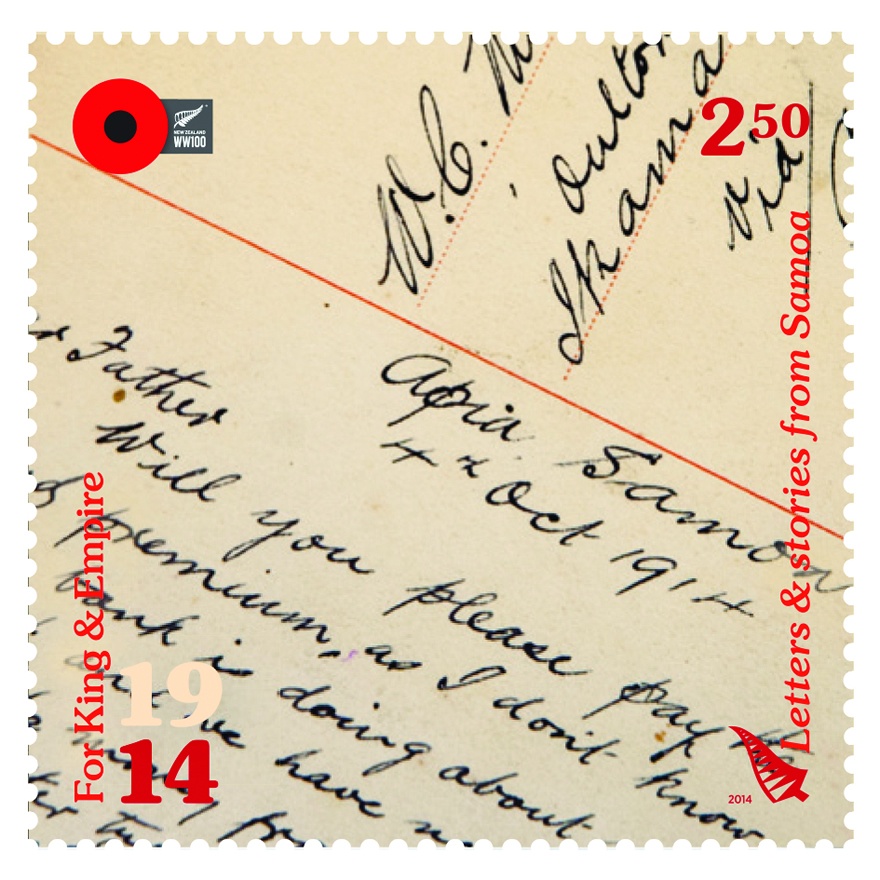
This stamp from New Zealand Post’s First World War centenary series commemorates the occupation of German Samoa by New Zealand forces in August 1914.
On 6 August, the day after New Zealanders learned of the outbreak of the First World War, the British government asked the dominion to perform ‘a great and urgent Imperial service’ by seizing a wireless station near Apia, the capital of German Samoa. This would disrupt German communications and also prevent the use of the islands by the German East Asiatic Squadron, which was based at Tsingtao (Qingdao) in north-east China but ranged widely across the Pacific Ocean.
The Reform Party government led by William Massey needed no persuasion. New Zealand politicians had long wanted to enlarge New Zealand’s modest empire in the Pacific (the Cook Islands and Niue). They’d had their eyes on Fiji, but Samoa was too good an opportunity to miss. A 1400-strong Samoa Expeditionary Force (SEF) of serving Territorial soldiers was assembled within five days, sailed on 15 August and occupied Apia without bloodshed on the 29th.
The Germans had been expected to oppose the landing and the SEF included three companies of infantry and a battery of field artillery. These men deployed around Apia while field engineers assisted by radio experts from the Post and Telegraph Detachment got the sabotaged wireless station back in action. A company of railway engineers repaired the line from the port to the wireless station, and the locomotive which ran on it.
The railway engineers were members of the Railways Corps, a specialist unit of New Zealand’s Territorial Force staffed by Railways Department employees. Its counterpart in the Territorial Force was the 1500-strong Post and Telegraph Corps, made up of Post and Telegraph Department employees. Their contribution to the SEF was the six-man Post and Telegraph Detachment, three of whom were radio experts.
No field post office was sent with SEF, so men from various units were assigned to the Samoan postal service. Corporal E.J. Dingle of the railway engineers was promoted to lieutenant and appointed Postmaster in Apia. He arranged for the overprinting of German (and later of New Zealand) stamps and had the mails flowing within a few days.
In early 1915 Dingle was replaced as Postmaster by Corporal E.E. Coughlan of the 5th (Wellington) Regiment. While Warrant Officer E.E. Dunwoodie worked at the wireless station until 1919, the other five members of the Post and Telegraph Detachment returned to New Zealand with the bulk of the SEF in March/April 1915. Sergeants R. Croudace and A.J. Simpson subsequently re-enlisted for service in Europe; Croudace was a lieutenant in the Royal Air Force when he was killed in an aircraft accident at Ismailia, Egypt in July 1919.


Community contributions